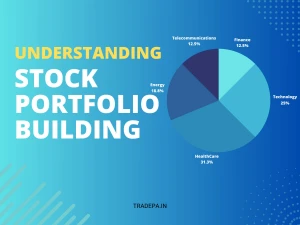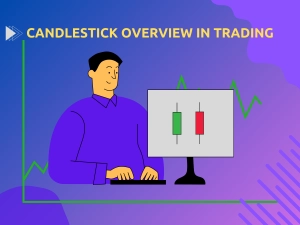Position Sizing and Money Management in Trading

Introduction
Position sizing and money management are crucial aspects of successful trading. Many beginners overlook these fundamentals, focusing solely on finding the next big trade. However, understanding and implementing effective position sizing and money management strategies can significantly improve your chances of long-term success in the financial markets.
Why Position Sizing and Money Management Matter
Imagine this scenario: you've spotted a potentially lucrative stock or currency pair and are eager to dive in headfirst. However, if you neglect to apply proper position sizing and money management, you could be setting yourself up for a financial disaster. Position sizing determines how much of your capital you'll assign to each trade, while money management safeguards your account from excessive losses. These two elements act as the rudder of a ship, steering your trading journey and aiding you in navigating the volatile waters of the market.
Effective position sizing and money management are not just about maximizing profits; they're also about minimizing risks. By prudently managing your trade sizes and preserving your capital, you can weather the inevitable ups and downs of trading without wiping out your account. Essentially, successful trading strategies are built on the foundation of position sizing and money management. Without a strong understanding of these areas, even the most promising trading setups can swiftly turn into costly mistakes.
What is Position Sizing and Money Management?
Position sizing is the process of determining the amount of capital you're willing to risk on a specific trade. It involves calculating the appropriate position size by considering factors such as risk tolerance, your account size and the market's volatility. Essentially, position sizing helps you strike a balance between maximizing potential profits and limiting potential losses, ensuring you don't put all your eggs in one basket.
On the other hand, money management is the broader concept of how you manage your trading capital overall. It encompasses position sizing and other aspects, such as setting stop-loss orders, diversifying your portfolio, and managing leverage. Money management is about preserving and growing your capital over the long term rather than chasing short-term gains at the expense of your account's stability.
The Foundation of Successful Trading
In trading, success begins with effective risk management. It serves as the cornerstone upon which all other aspects of trading, including position sizing, are built. Even the most promising trading strategy can quickly lead to substantial losses without proper risk management. Therefore, understanding and implementing sound risk management principles are essential for beginners navigating the markets.
Position Sizing Strategies
Employing the right trading strategy can make all the difference in your long-term success when managing your trading positions. Here, we'll explore three popular position sizing strategies: fixed fractional position sizing, the Kelly Criterion, and volatility-based position sizing. Each approach comes with its own set of advantages and considerations, catering to traders with varying risk preferences and market conditions.
Fixed Fractional Position Sizing
Fixed fractional position sizing is a time-tested method that allocates a fixed percentage of your trading capital to each trade. This approach ensures that you risk a consistent portion of your account on every trade, regardless of market conditions or your account size. While fixed fractional position sizing provides simplicity and ease of implementation, it has pros and cons.
Pros and Cons of Fixed Fractional Position Sizing:
Pros:
- Simplified Risk Management: With fixed fractional position sizing, you have a clear and straightforward method for determining trade sizes, eliminating the need for complex calculations.
- Consistent Risk Exposure: By risking a fixed percentage of your account on each trade, you maintain a consistent level of risk across all positions, helping to mitigate the impact of losses.
Cons:
- Limited Flexibility: Fixed fractional position sizing may not be suitable for all trading scenarios, particularly in highly volatile markets or when trading with smaller accounts.
- Potential for Overexposure: In certain situations, fixed fractional position sizing may result in disproportionately large positions relative to account size, increasing the risk of significant drawdowns.
Implementing Fixed Fractional Position Sizing in Your Trades
To implement fixed fractional position sizing in your trading strategy, determine your desired risk percentage per trade. Once you've established your risk percentage, calculate the position size for each trade based on the current value of your account and the distance to your stop loss level. By consistently applying fixed fractional position sizing to your trades, you can effectively manage risk and protect your capital over the long term.
Kelly Criterion: The Math Behind Optimal Position Sizing
The Kelly Criterion, a mathematical formula with a rich history, was developed by mathematician John L. Kelly Jr. in the 1950s. It provides a framework for determining the optimal position size by considering the probability of success and the potential payoff of a trade. This strategy, designed to maximize the long-term growth of capital, allocates an optimal fraction of your account balance to each trade. By understanding and applying the Kelly Criterion, traders can optimize their position sizes and improve their overall risk-adjusted returns.
Understanding Kelly Criterion Formula
The Kelly Criterion formula, while relatively straightforward, involves calculating the ratio of the expected return of a trade to the variance of the return. It seeks to maximize the geometric growth rate of capital by allocating a fraction of the account balance equal to the expected return divided by the variance. However, it's important to note that the Kelly Criterion, despite offering a theoretically optimal position sizing strategy, relies on accurate estimates of probability and payoff. These estimates can be challenging to obtain in practice, highlighting the need for careful consideration and potentially further education.
Applying Kelly Criterion to Different Trading Scenarios
To apply the Kelly Criterion to your trading strategy, start by estimating the probability of success and the potential payoff of each trade. This could involve conducting thorough market analysis, backtesting historical data, or using technical indicators to assess market conditions. Once you have these estimates, calculate the optimal fraction of your account balance to allocate to each position using the Kelly Criterion formula.
Volatility-Based Position Sizing
Volatility-based position sizing is a dynamic approach that adjusts trade sizes based on the volatility of the underlying market. Unlike fixed fractional position sizing, which allocates a fixed percentage of capital to each trade, volatility-based position sizing takes into account fluctuations in market volatility to determine optimal position sizes. This adaptive strategy allows traders to tailor their risk exposure to prevailing market conditions, optimizing their trading performance across different environments.
Adapting Position Sizes to Volatility Trends
In volatile market conditions, position sizes are adjusted downwards to reduce risk exposure and preserve capital. Conversely, position sizes are increased in low-volatility environments to capitalize on potential opportunities and maximize returns. By adapting position sizes to volatility trends, traders can effectively manage risk and exploit market inefficiencies, enhancing profitability.
Adjusting Risk Exposure in High and Low Volatility Markets
In high-volatility markets, traders may reduce position sizes to protect against large price swings and sudden reversals. This cautious approach helps mitigate the impact of adverse market movements and preserves capital for future opportunities. On the other hand, in low-volatility markets, traders may increase position sizes to take advantage of stable price trends and capitalize on potential breakout opportunities. By adjusting risk exposure based on prevailing market conditions, traders can optimize their performance and adapt to changing dynamics in the financial markets.
Psychological Aspects of Position Sizing
Successful trading isn't just about numbers and analysis; it also requires mastering the psychological aspects of the game. Fear and greed can frequently obscure judgment and result in impulsive decision-making, especially regarding position sizing. This section will explore how traders can manage emotions and maintain discipline when determining their position sizes.
Emotion Management: Controlling Fear and Greed
Fear can paralyze traders, causing them to hesitate or exit trades prematurely out of fear of losing money. Conversely, greed can lead traders to take excessive risks or hold onto winning positions for too long, hoping for even greater profits. Recognizing and managing these emotional biases is essential for maintaining a clear and rational mindset regarding position sizing.
Recognizing Emotional Biases in Trading
Recognizing emotions is the initial step in managing them when they influence your decisions. Common emotional biases in trading include confirmation bias, where traders seek information that confirms their beliefs, and recency bias, where recent events outsize decision-making. By acknowledging these biases, traders can implement measures to reduce their effects and make more objective decisions when determining position sizes.
Techniques for Overcoming Emotional Impulses
Once you've identified your emotional biases, the next step is to develop techniques for overcoming them. This could involve practicing mindfulness and staying present at the moment rather than dwelling on past mistakes or worrying about future outcomes. Additionally, setting clear trading rules and sticking to them can help reduce the influence of emotions on position sizing decisions. By adhering to a disciplined approach and focusing on the facts rather than emotions, traders can improve their consistency and profitability.
Staying Disciplined: The Role of Consistency in Position Sizing
Consistency is key to successful trading, particularly regarding position sizing. Crafting and sticking to a trading plan can assist traders in avoiding impulsive decisions and maintaining discipline in their position sizing strategy.
Developing a Trading Plan and Sticking to It
When developing a trading plan, it's essential to clearly define your goals, including your desired level of profitability and acceptable level of risk. Additionally, outline specific criteria for entering and exiting trades and guidelines for adjusting position sizes based on market conditions.
Keeping Emotions in Check During Winning and Losing Streaks
Winning and losing streaks is a natural aspect of trading, but they can also be emotionally challenging. During winning streaks, traders may experience overconfidence and become tempted to increase position sizes or take on additional risks. Conversely, fear and self-doubt can creep in during losing streaks, leading traders to second-guess their strategies or abandon their trading plans altogether. By staying disciplined and adhering to your trading plan, you can keep emotions in check and maintain consistency in your position sizing, regardless of market conditions.
Advanced Techniques and Tools:
As traders progress in their journey, they often seek advanced techniques and tools to refine their position sizing strategies and enhance risk management. This section will delve into three sophisticated methods: Monte Carlo simulation, correlation analysis, and position sizing software. These tools provide traders with valuable insights and capabilities to optimize their trading approaches and achieve greater consistency and profitability.
Monte Carlo Simulation: Stress Testing Your Position Sizing Strategy
Monte Carlo simulation stands as a potent statistical method that models the probability of different outcomes in complex systems. When applied to trading, it allows traders to simulate various market scenarios and assess the robustness of their position-sizing strategies. By generating thousands of hypothetical market scenarios based on historical data and random variables, Monte Carlo simulation provides insights into how different factors may impact trading performance.
Simulating Various Market Scenarios
One key benefit of Monte Carlo simulation is its capability to simulate a diverse array of market conditions, from calm and stable to volatile and unpredictable. Traders can use this information to stress test their position-sizing strategies and identify potential weaknesses or vulnerabilities. By evaluating the performance of their strategy across thousands of simulations, traders gain a deeper understanding of their risk exposure and can make more informed decisions about position sizing.
Analyzing the Robustness of Your Position Sizing Model
Monte Carlo simulation not only simulates market scenarios but also empowers traders to analyze the robustness of their position-sizing models. By varying key parameters such as risk tolerance, position size, and stop-loss levels, traders can confidently assess how these variables impact overall performance. This understanding allows traders to fine-tune their position-sizing strategies and optimize them for different market conditions, ultimately enhancing their risk-adjusted returns.
Correlation Analysis: Diversifying Your Portfolio Effectively
Correlation analysis, a fundamental concept in portfolio management, presents a powerful opportunity for traders. By understanding the correlation coefficients between assets, traders can potentially lower overall risk exposure and enhance their returns through effective diversification. In this section, we'll explore how correlation analysis can be used to optimize position sizes across correlated assets, potentially leading to increased returns.
Understanding Correlation Coefficients
Correlation coefficients gauge the extent to which two variables move relative to each other. Correlation coefficients assess the relationship between different assets or asset classes in trading. A correlation coefficient +1 denotes a perfect positive correlation, meaning two assets move in lockstep. A correlation coefficient of -1 indicates a perfect negative correlation, meaning two assets move in opposite directions.
Optimizing Position Sizes Across Correlated Assets
When trading correlated assets, it's crucial to adjust position sizes to account for their relationship. For example, if two assets have a high positive correlation, doubling up on positions in both assets may increase overall risk exposure. Conversely, if two assets have a high negative correlation, holding positions in both assets may provide diversification benefits and reduce overall risk. By analyzing correlation coefficients and optimizing position sizes across correlated assets, traders can build more resilient portfolios and improve their risk-adjusted returns.
Position Sizing Software and Tools
This section will review popular position-sizing software and discuss how traders can leverage technology to improve their trading performance.
Review of Popular Position Sizing Software
Position-sizing software, from straightforward calculators to advanced analytics platforms, is designed to empower traders. Popular options like TradeSizer, Position Size Calculator, and MyMT4Book, are user-friendly tools that enable traders to swiftly and accurately calculate position sizes. These calculations are based on their risk tolerance, account size, and trading strategy. Moreover, these software options offer advanced features such as Monte Carlo simulation, correlation analysis, and portfolio optimization, empowering traders to make informed decisions and manage risk effectively.
Leveraging Technology for Enhanced Risk Management
Technology offers traders a pathway to enhanced risk management. For instance, algorithmic trading platforms can execute trades automatically based on predefined criteria, reducing the potential for human error and emotional decision-making. Risk management tools like stop-loss orders and trailing stops can be programmed into trading platforms to safeguard capital and limit losses. By embracing technology, traders can streamline their trading processes, enhance risk management, and potentially achieve superior results in the markets.
Conclusion
Position sizing and money management are essential for successful trading strategies. Key takeaways include defining risk tolerance, using favorable risk-to-reward ratios, implementing stop-loss orders, staying disciplined, leveraging technology, and learning from mistakes. Continuous improvement involves ongoing education, regular performance evaluation, adaptability, patience, and persistence.








